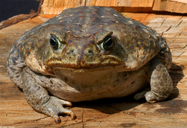The Most-Traveled Cane Toad
Grubbin' (...gotta grow)
Questions answered (and bookmarked) on this page:
As you might expect, the toads eat differently at different life stages. When they’re in eggs, they absorb the yolk sac. As new hatchlings, they eat the remainder of the egg mass, then progress to eating algae, and (finally) other vegetation, water bugs, and tadpoles. From the metamorph stage onwards, cane toads mostly eat anything that fits in their mouths. This includes tiny bugs, snails, other anurans, salamanders, snakes, birds, rodents (including mice), crabs and other crustaceans, stinging insects, and even rotting vegetation.
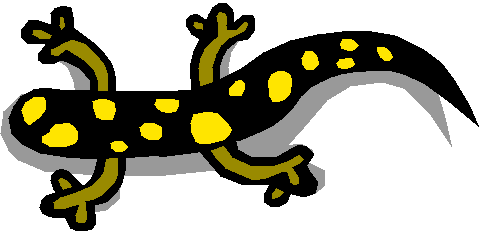
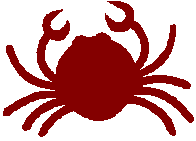
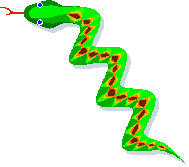
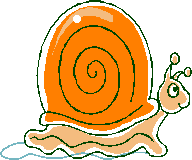
 In
urban areas, these toads learn to eat pet food and even figure out
the feeding schedule. They’ve been known to
eat a ping pong ball that rolls past their hideout.
They have even eaten lit cigarette butts (without showing
signs of distress), and feces. Toads in
In
urban areas, these toads learn to eat pet food and even figure out
the feeding schedule. They’ve been known to
eat a ping pong ball that rolls past their hideout.
They have even eaten lit cigarette butts (without showing
signs of distress), and feces. Toads in
They aren’t careful eaters, sometimes eating rocks. That all said, toads prefer dark over lighter colored beetles, moving over stationary food (eating stationary food is a learned behavior), and even the biggest of adults seem to prefer food that is 0.5-1 cm in size. Ants and beetles are both the most common items found in the stomach of cane toads and also the greatest biomass consumed. Toads may eat some 200 prey during a night of feeding. They are happy gluttons if given the chance – if you’d pick up a cane toad after a night of feeding, you’d likely hear crackling in the stomach; that’s the exoskeletons of all the insect victims!
As a side note, consider that because insects are the food of choice for cane toads, and cane toads have such large populations and voracious appetites, cane toads may out-eat other insectivores, resulting in their deaths, population collapse of insectivore species, and then food chain imbalance –whew!

There is usually no dining table. While some anurans sit and wait for their prey to come to them, Bufo species such as the cane toad are active seekers of their food. Because of the need for physical activity in order to catch prey, bufo have good aerobic capacity, relatively large lungs (both due to activity and the degree of respiration through their skin) and have fat stores for “emergency” use in fueling a hunting expedition. Toads may eat in groups. They aren’t territorial, but arrange themselves by means of the size of “strike zones” – smaller and less aggressive toads stay out of the mouth-reach range of the bigger toads.

 Experiments suggest that hearing rather
than smell is the main mechanism of locating food, but toads
tongue slap at locations that smell like food and learn to eat
stationary items. They use hearing to guide them
to the locations of other frogs, which may then become food.
When vision is used in either navigating or locating
food, toads see best in dim light and see mostly green and
yellow colors.
Experiments suggest that hearing rather
than smell is the main mechanism of locating food, but toads
tongue slap at locations that smell like food and learn to eat
stationary items. They use hearing to guide them
to the locations of other frogs, which may then become food.
When vision is used in either navigating or locating
food, toads see best in dim light and see mostly green and
yellow colors.
Interestingly, while most anurans including cane toads actively hunt out their prey, mid-sized cane toads may also lure the prey to them. The toads do this by wigging the middle toe on their hindfeet. They startle the wiggle in response to seeing a food item, either insect or a smaller anuran. Research indicates that toadlets but not insects actually respond to the toe wiggle, however. Among a sampling of toads 2-5 cm collected near a pond, 64% of the prey items in their stomachs were smaller toads!
The use of toe wiggles as a lure for smaller toads is confined
to mid-size toads. It makes sense that
toadlets wouldn’t utilize luring, since few anurans are likely
to be small
 enough to eat. However, the lack
of luring by larger cane toads is interesting.
In other species, the restriction of luring activity to
relatively young individuals has been explained by dietary
differences between mid- and fully matured individuals.
This sort of rational seems somewhat weak in cane toads,
seeing as even the large adults prefer food items around 1 cm in
size. At the least, such behavior is an
oddity worth further study.
enough to eat. However, the lack
of luring by larger cane toads is interesting.
In other species, the restriction of luring activity to
relatively young individuals has been explained by dietary
differences between mid- and fully matured individuals.
This sort of rational seems somewhat weak in cane toads,
seeing as even the large adults prefer food items around 1 cm in
size. At the least, such behavior is an
oddity worth further study.
Field studies suggest that cane toads gorge one night and then take a few nights off, being active only 1 out of every 3 or 4 evenings. One a single evening, toads stay in one feeding zone. The toad will move to a different location for the next feed. A forging area may be 160 square meters (480 square feet). All feeding areas are around a common location, often a favored resting site to which the toads navigate back by means of both visual recognition and actually by muscle memory.
The size of the forging zone varies somewhat by season. Prey is abundant at the start of the wet season, shrinking the working range of the toad. As the wet season continues, prey density decreases, and the toad works a larger forging zone. During the dry season, there is a moderate prey density, and the toad balances the need of food with the biological cost of losing water while traveling over a dry environment (they’re known to migrate 165 m from watering holes). If the environment is too dry, then the toad may opt not to search for food, and instead utilize the store of glycogen in its liver (excess is stored in good times). Toads do store and utilize excess: toads have stowed away in cargo and, 1 month later, been physically healthy although skinny. (But clearly, going hungry is not the toad’s preference.)
 Toads do not
"drink"
water. Like many Anurans, cane toads absorb
water through vascular patches on their inner
thighs. The skin in these areas is thin,
which helps with diffusion and water uptake.
This inner thigh area is in contact with the ground when the
toad sits. If the ground substrate is dry,
the toad can lift its seat off the ground and wrinkle the skin
of these patches so as to reduce the loss of moisture.
Sometimes when in the water toads also appear to
intentionally pulse the muscles around these “drinking patches”
Toads do not
"drink"
water. Like many Anurans, cane toads absorb
water through vascular patches on their inner
thighs. The skin in these areas is thin,
which helps with diffusion and water uptake.
This inner thigh area is in contact with the ground when the
toad sits. If the ground substrate is dry,
the toad can lift its seat off the ground and wrinkle the skin
of these patches so as to reduce the loss of moisture.
Sometimes when in the water toads also appear to
intentionally pulse the muscles around these “drinking patches”
The toad’s dry skin reduces the amount of water which is lost to the environment. Inevitably, however, the toad must compensate for water loss. This is most problematic in the dry season, which is the season in which most deaths happen (both due to dehydration and starvation, which are even more problematic if a toad carries much of a parasite load). When a toad loses 50% of the water within its body, it dies of dehydration.
As a toad dehydrates, the resulting change blood plasma concentration induces the release of a hormone which not only results in the toad enhancing the moisture absorptivity of the seat patch and resorbing water from its bladder (quite the feat!). A full bladder may represent up to 30% the weight of the entire body.
Toads can also alter their behavior and body position so as to minimize water loss. Toads move and hunt less in dry weather, and seasonally move around to help regulate their body temperatures. They also keep their appendages close to their body, to minimize the amount of surface area exposed to the environment and water loss. Sometimes groups of toads will ball up together, forming a mass with less collective surface area for water loss. When the loss of moisture is not a concern, the toad may intentionally urinate in its resting place so as to maintain an appropriate moisture level in the ground substrate…yuck!
Now that you've learned about feeding, learn about the more interesting breeding habits!
